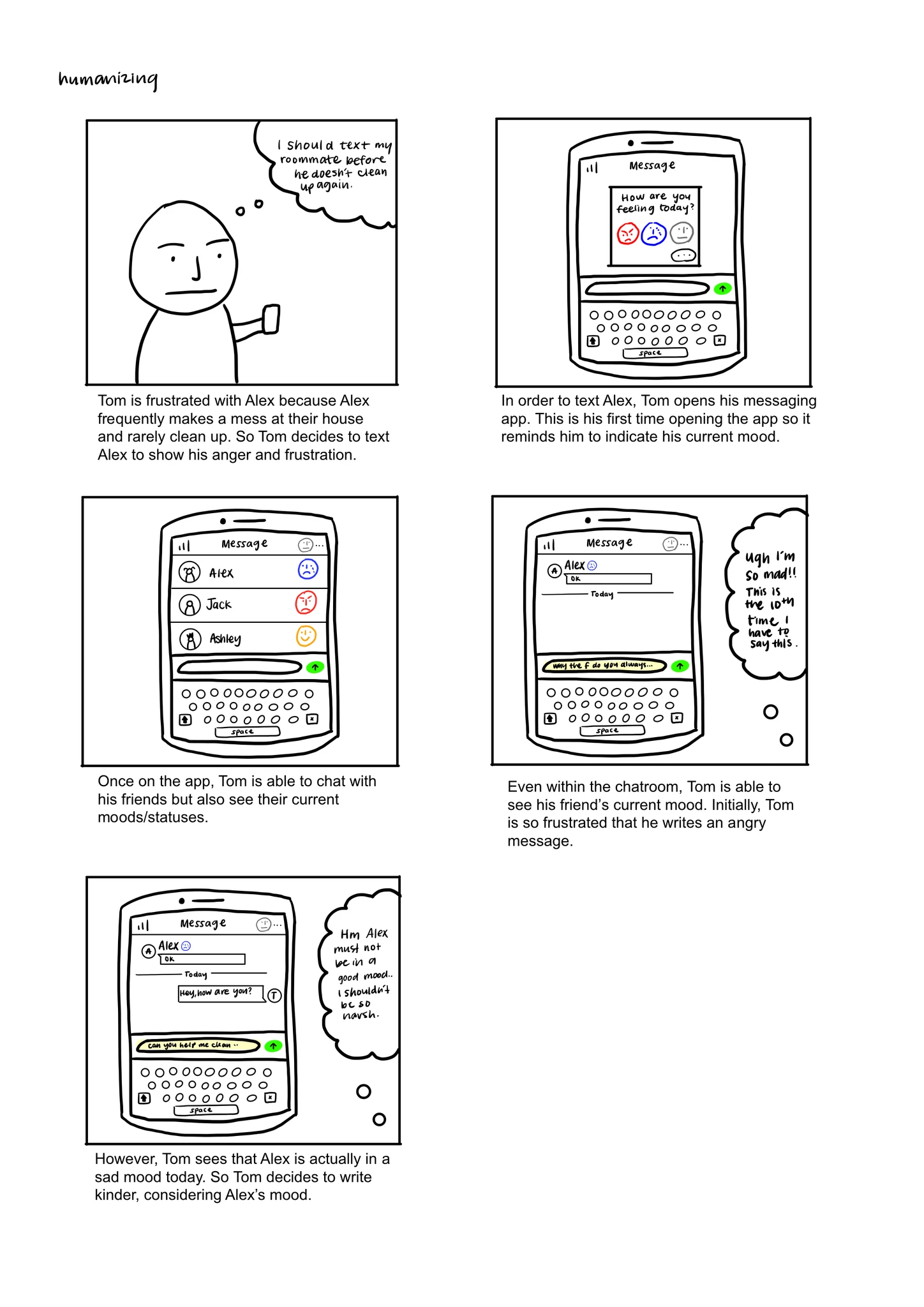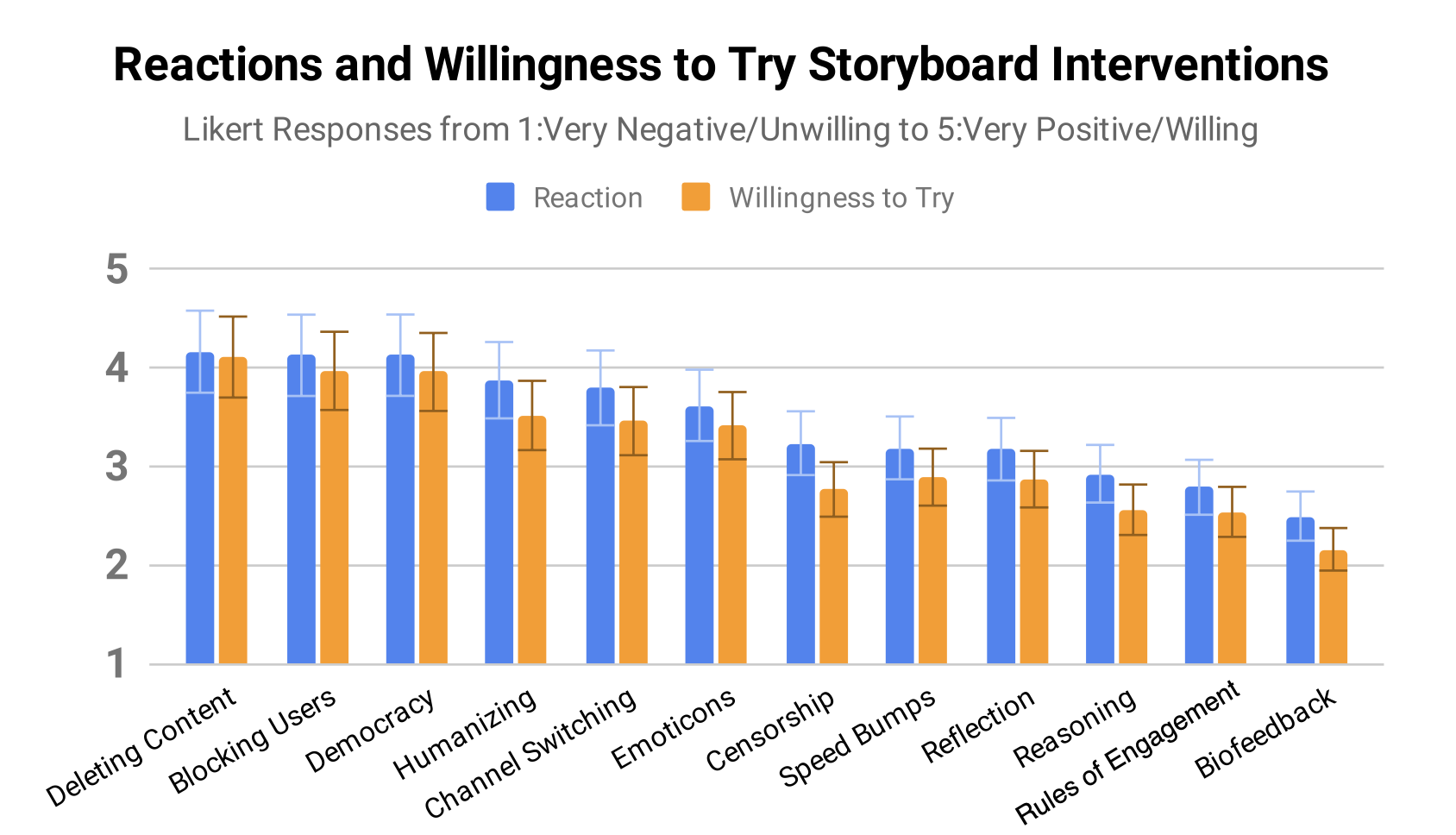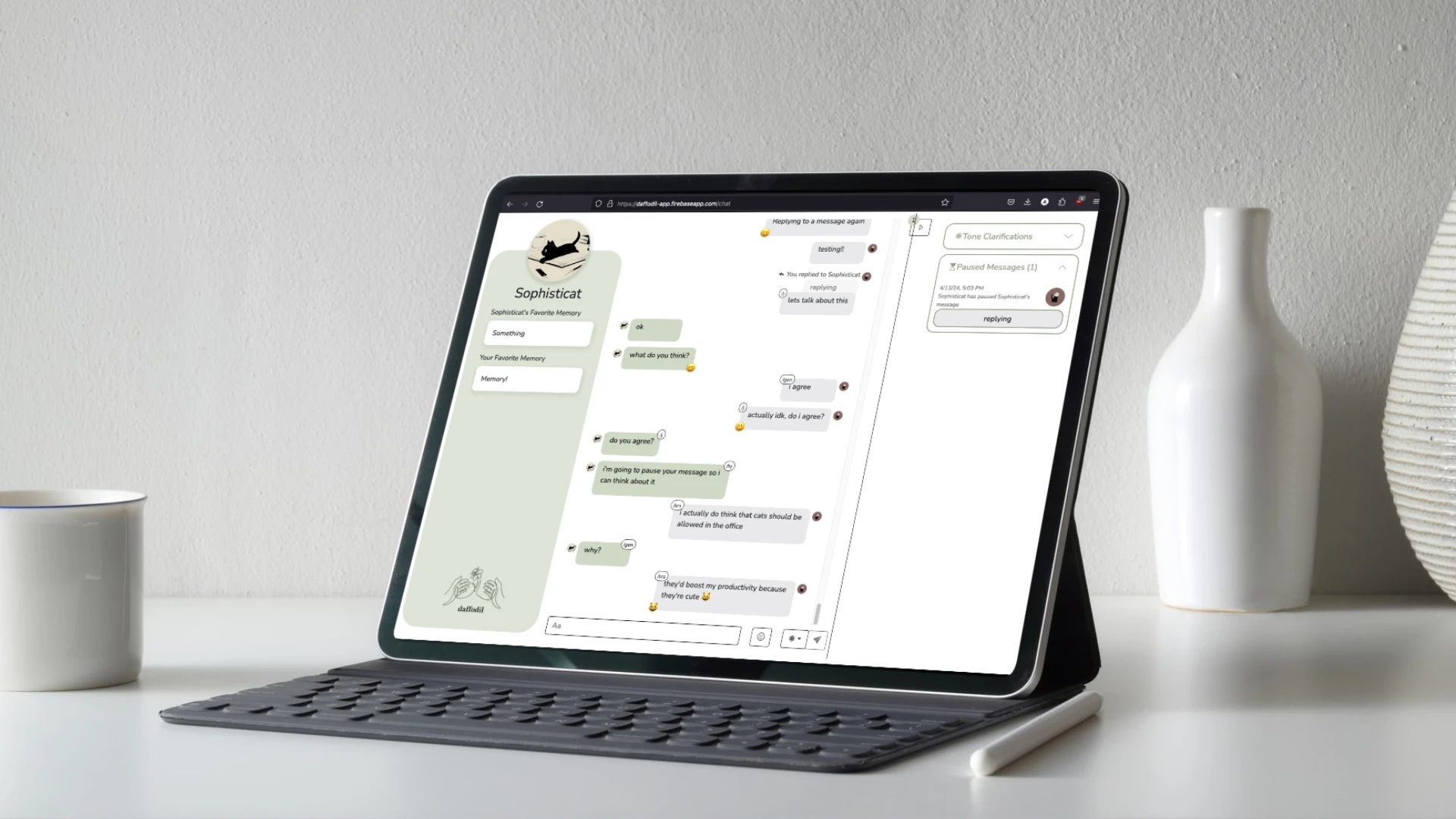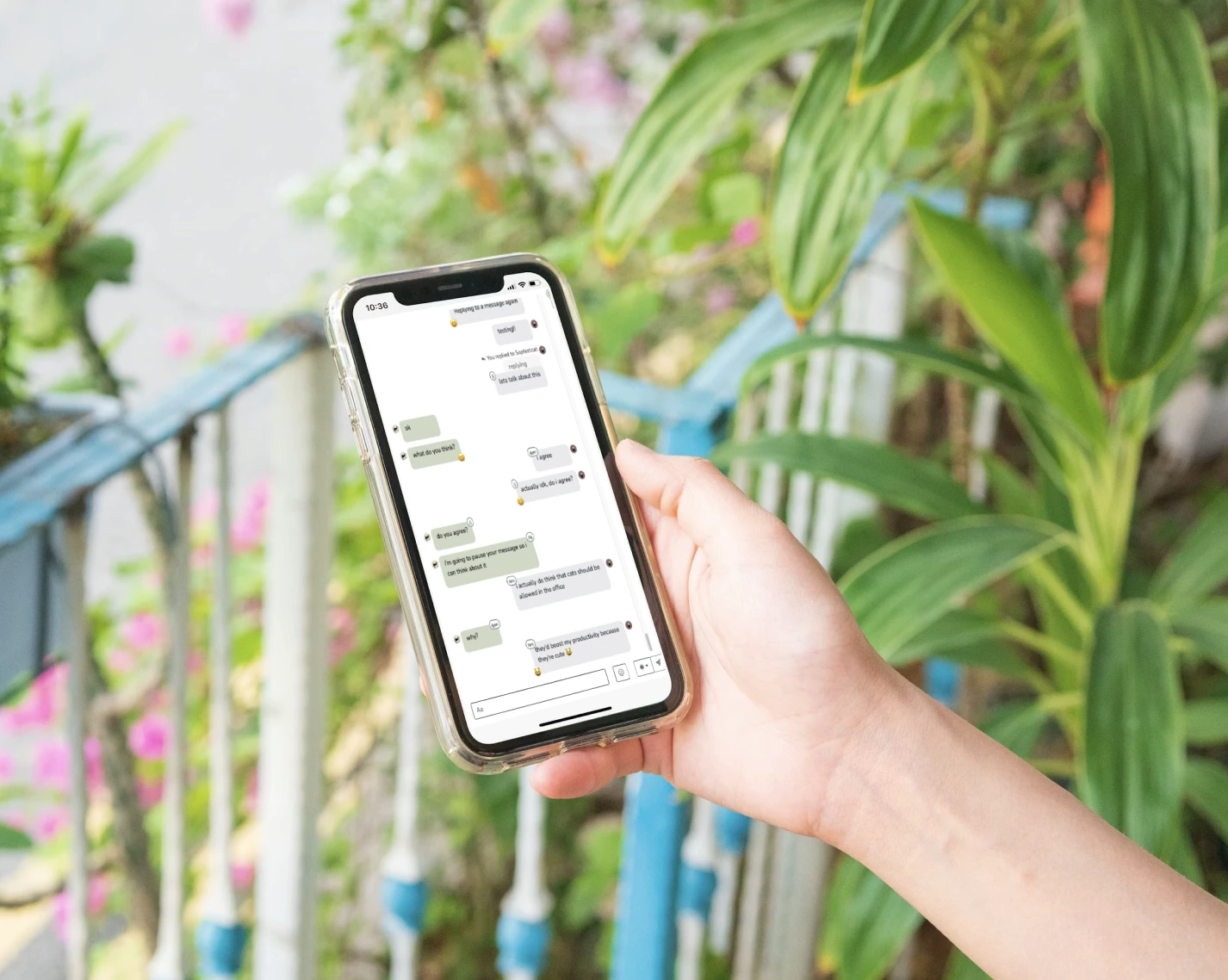Daffodil Messenger
Fostering user attunement in tough online conversations
Have you ever found yourself in a tense conversation over text?
Our research shows that most people have found themselves in an online argument at one point or another, and it often ends badly. From hurt feelings to being unfriended, there is often needless damage to people’s relationships as a result of these tough conversations. Therefore, a team of researchers, designers, engineers, and I decided to explore how design could influence these conversations for the better.
Stage 1. Exploratory Research
We conducted a study with 268 total participants, including 22 interviews, 148 survey responses, and 98 storyboard evaluations. We asked participants about previous online arguments they had participated in and how design impacted these arguments. These revealed that participants want to be able to humanize each other during tough conversations, by bringing in details such as current mood, identity, and background. People prefer to have tough conversations in private and over messaging platforms, and they want platforms to allow them to replicate what they already do offline, such as pull someone aside for a hard conversation (Baughan et al., 2021).


Stage 2. Co-Design With Social Media Users
We led ran co-design studio sessions with participants to brainstorm novel features that address the users’ needs without unnecessarily intruding. We mapped out several user journeys to visualize how users would interact with the proposed features. We settled on two unique design interventions: tone tagging messages, in which users could supply and ask for the contextual details of how their message was intended, and pausing, in which users could indicate that they needed to pause and come back to a message. These were backed by both user feedback and research from psychology, which states one cannot engage productively when one’s heart rate is elevated over 100 bpm.

Stage 3. Design Execution
- Prototyping: Our designer created interactive prototypes, enabling realistic user interactions. We conducted live prototype demonstrations to another set of 14 users, providing a tangible sense of the app's look and feel, as well as its functionality.
- UI Design: Our designer crafted an intuitive, accessible, and aesthetically pleasing user interface, selecting a color palette intended to promote peacefulness and grounding. Integrating feedback from user interviews to refine the UI, we ensured that it not only looked appealing but also provides a high quality experience.


Stage 4. User Evaluations
Finally, we organized a series of remote user testing sessions, employing both qualitative and quantitative methods, to evaluate the app’s usability and effectiveness in fostering connection during hard conversations online. We recruited six pairs of participants (n=12) to use Daffodil while carrying out a disagreement over topics such as entertainment, politics, and current events. Users used the platform for 15-20 minutes in an unmoderated lab study, followed by interviews. We recorded user clicks on various features, and recorded their perceived partner responsiveness before and after the study.
Outcomes: Data Analysis and Results
In this study, we conducted an interative, user-centered design process to ultimately test two novel designs: tone tagging and pausing messages. Tone tagging allowed users to associate tone indicators with individual messages, and pausing messages obfuscated the text of a message until a user unpaused it and was prompted to reply.
We found that our users were excited about the clarity that these interventions provided and how they would help keep their conversations organized during a rapid back-and-forth discussion. Users reported in interviews that they thought these interventions increased their partners’ responsiveness towards them, however, there were no quantitative differences before and after the study. Users welcomed these design frictions of pausing and adding tone during pivotal moments such as conflict in their relationships. They saw these interventions as an opportunity to develop deeper understanding towards themselves and each other. The designs tested in Daffodil have the potential to transform how online conflict impacts relationships by clarifying the underlying meaning of messages, increasing opportunities to pause and regulate, and increasing attunement between people.
